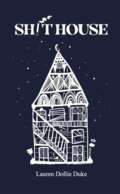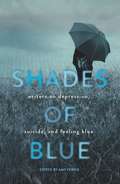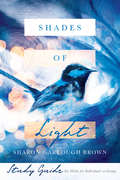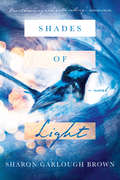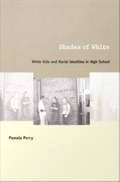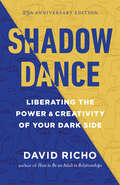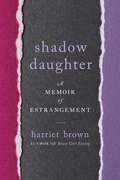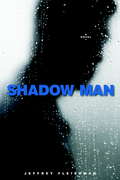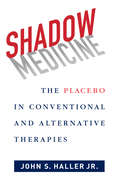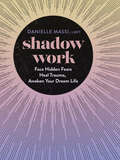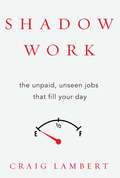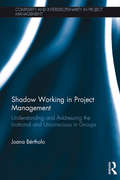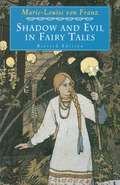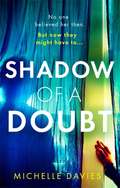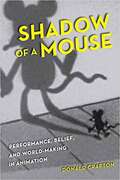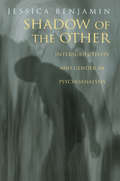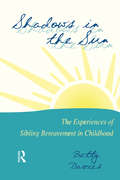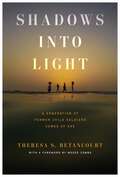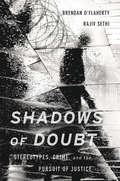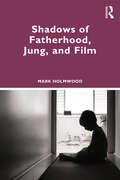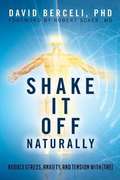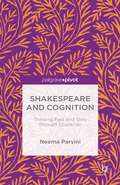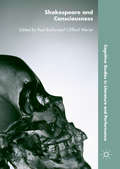- Table View
- List View
Sh!thouse: A Memoir
by Lauren Dollie DukeSh!thouse: A Memoir is a story of brutal girlhood. Lauren was seven when she helped her step-father boost rum bottles from the local liquor store. The next year, her biological father took her to a hotel room and shot up heroin in the bathroom. The next day he robbed a bank with a finger gun! When he was released from prison, he moved into Lauren’s basement. They spent the weekends smoking cartons of cigarettes, diving into dumpsters and swindling used cars. Lauren’s upbringing provided her with only one lens through which she saw herself – shame. And that shame overflowed into every aspect of her life. In this compassionate and gritty real-life fairytale the author, Lauren Dollie Duke, shows how it’s possible for good people to do bad things and what it takes to create peace with where you come from in order to find true happiness. This raw and humorous account about trauma, transcendence and resilience challenges the binary of good vs. evil. It lays out the evolution of shame psychology and intergenerational trauma seeking to answer the question of how we unravel ourselves from the history and patterns of our families. Sh!thouse will make you want to investigate your own historical patterns, examine all of your relationships, and forgive everyone, including yourself. It’s a tether to our shared humanity which reminds us there is belonging in the world no matter how horrific it was to start. It is a beautifully written map that draws back to the personal root of where sabotaging behavior, shame and limitation is born.
Shades of Blue: Writers on Depression, Suicide, and Feeling Blue
by Amy FerrisThe silent epidemic of depression affects millions of people and takes dozens of lives everyday, while our culture grapples with a stigma against open discussion of mental health issues. Editor Amy Ferris has collected these stories to illuminate the truth behind that stigma and offer compassion, solidarity, and hope for all those who have struggled with depression.Contributors to Shades of Blue include:Barbara AbercrombieSherry AmatensteinChloe CaldwellJimmy CampDebra LoGuercio DeAngeloMarika Rosenthal DelanHollye DexterBeverly DonofrioBeth Bornstein DunningtonMatthew EbertBetsy Graziani FasbinderZoe FitzGerald CarterPam L. HoustonDavid LacyPatti LinskyMark S. KingCaroline LeavittKaren LynchLira MaywoodC.O. MoedMark MorganLinda Joy MyersChristine Kehl O'HaganJennifer PastiloffRuth PennebakerAngela Giles PatelAlexa RosalskyElizabeth RosnerKathryn RountreeKitty SheehanJenna StonejudywhiteSamantha WhiteShades of Blue brings the conversation around depression and sadness into the open with real, first-hand accounts of depression and mental health issues, offering empathy to all those who have been affected by these issues.It's time to scream out loud against this silent annihilator: We are not alone.
Shades of Light Study Guide
by Sharon Garlough BrownSharon Garlough Brown's novel Shades of Light is an exploration of depression, anxiety, caregiving, and the healing journey. In particular, it offers windows into the power of art as a spiritual practice. This six-week study guide is an opportunity for you to reflect on how the experiences of the characters in the novel resonate with your own experience. Daily Scripture readings and reflection questions are accompanied by an invitation to explore creativity through art and prayer collage. You'll also be introduced to the practice of visio divina (meditating on art) through a weekly link to a piece of art by Vincent van Gogh. With simple spiritual practices, this guide offers a healing balm for those in the midst of difficult seasons.
Shades of Light: A Novel
by Sharon Garlough Brown"I was desperate. . . . I couldn't turn off the dark thoughts, no matter how hard I tried or how much I prayed.
Shades of White: White Kids and Racial Identities in High School
by Pamela PerryWhat does it mean to be young, American, and white at the dawn of the twenty-first century? By exploring this question and revealing the everyday social processes by which high schoolers define white identities, Pamela Perry offers much-needed insights into the social construction of race and whiteness among youth. Through ethnographic research and in-depth interviews of students in two demographically distinct U. S. high schools--one suburban and predominantly white; the other urban, multiracial, and minority white--Perry shares students' candor about race and self-identification. By examining the meanings students attached (or didn't attach) to their social lives and everyday cultural practices, including their taste in music and clothes, she shows that the ways white students defined white identity were not only markedly different between the two schools but were considerably diverse and ambiguous within them as well. Challenging reductionist notions of whiteness and white racism, this study suggests how we might go "beyond whiteness" to new directions in antiracist activism and school reform. Shades of White is emblematic of an emerging second wave of whiteness studies that focuses on the racial identity of whites. It will appeal to scholars and students of anthropology, sociology, and cultural studies, as well as to those involved with high school education and antiracist activities.
Shadow Dance
by David RichoOur "shadow" is the collection of negative or undesirable traits we keep hidden--the things we don't like about ourselves or are afraid to admit: egotist, non-"PC" proclivities, forbidden sexual desires. But it also includes our positive, untapped potential--qualities we may admire in others but disavow in ourselves. Befriending the shadow makes fear an ally and enables us to live more authentically. It also automatically improves our interpersonal relationships, because we are freed from the need to project our own negativity onto others, and we become more acutely aware when theirs is projected onto us. David Richo looks for where the shadow manifests in personal life, family interaction, religion, relationship, and the world around is. He shows how to use the gentle practice of mindfulness to work with our shadow side, and he provides numerous exercises for going deeper. He is remarkably skillful at making the shadow concept not only easy to understand, but supremely practical for enhancing the quality of our lives.
Shadow Dance: Liberating the Power & Creativity of Your Dark Side
by David RichoDiscover how to embrace the dark side of your personality—or the shadow self, as introduced by Carl Jung—to live a fuller, more authentic lifeOur &“shadow&” is the collection of negative or undesirable traits we keep hidden—the things we don't like about ourselves or are afraid to admit: egotist, non-&“PC&” proclivities, forbidden sexual desires. But it also includes our positive, untapped potential—qualities we may admire in others but disavow in ourselves. Befriending the shadow makes fear an ally and enables us to live more authentically. It also automatically improves our interpersonal relationships, because we are freed from the need to project our own negativity onto others, and we become more acutely aware when theirs is projected onto us.David Richo looks for where the shadow manifests in personal life, family interaction, religion, relationship, and the world around is. He shows how to use the gentle practice of mindfulness to work with our shadow side, and he provides numerous exercises for going deeper. He is remarkably skillful at making the shadow concept not only easy to understand, but supremely practical for enhancing the quality of our lives.
Shadow Daughter: A Memoir of Estrangement
by Harriet BrownA riveting, provocative, and ultimately hopeful exploration of mother-daughter estrangement, woven with research and anecdotes, from an award-winning journalist.The day of her mother's funeral, Harriet Brown was five thousand miles away. To say that Harriet and her mother had a difficult relationship is a wild understatement; the older Harriet grew, the more estranged they became. By the time Harriet's mom died at age 76, they were out of contact. Yet Harriet felt her death deeply, embarking on an exploration of what family estrangement means--to those who cut off contact, to those who are estranged, to the friends and family members who are on the sidelines.Shadow Daughter tackles a subject we rarely discuss as a culture: family estrangements, especially those between parents and adult children. Estrangements--between parents and children, siblings, multiple generations--are surprisingly common, and even families that aren't officially estranged often have some experience of deep conflicts. Estrangement is an issue that touches most people, one way or another, one that's still shrouded in secrecy, stigma, and shame. In addition to her personal narrative, Harriet employs interviews with others who are estranged, as well as the most recent research on family estrangement, for a brave exploration of this taboo topic. Ultimately, Shadow Daughter is a thoughtful, deeply researched, and provocative exploration of the ties that bind and break, forgiveness, reconciliation, and what family really means.
Shadow Lives: Writings on Widowhood
by Uma Chakravarti Preeti GillThis volume documents the focus on the widow, regarded as the dark half of womankind in tradition, the structural counterpart of the sumangali or the auspicious married woman, and to provide an archive on widowhood.
Shadow Man
by Jeffrey FleishmanForeign correspondent James Ryan was there whenever the world changed: in the Middle East, in the Balkans, in the former Soviet bloc. But now he can't remember these events; he can't recall anything long-term, except the summer of his fifteenth year following his mother's death. It was the summer his father told him to call him Kurt. The summer the mysterious and enchanting Vera burst into their lonely, quiet lives. The summer his own world opened, then irrevocably changed.James, at fifty-two, suffers from a severe case of early onset Alzheimer's. The novel unravels James's predicament through the clear glimpses he retains of that long ago summer, and through the desperate attempts of his wife and his nurse to bring him back to the present, if only for stolen moments. Each has her motives: his wife trying not to lose the man with whom she shared so much - wars, death, love, loss of a child, history. And his nurse, the half sister he never knew he had, needing James's adolescent memory to understand the biological father and mother she never met. Told from the perspective of a man betrayed by his own mind, Shadow Man is a novel of identity and suspense that travels across continents and deep into the pasts that make us each who we are. It explores the power of memory to heal and to mask, and of the limits of unconditional love. Set in Philly and the eastern shore of yesteryear, in the Middle East, and throughout Eastern Europe, Fleishman's trademark descriptive but spare lyricism shines. Shadow Man is a touching and haunting novel perhaps most similar to The Diving Bell and the Butterfly, though it is a work of fiction. From the Trade Paperback edition.
Shadow Medicine: The Placebo in Conventional and Alternative Therapies
by Jr. John HallerCan Evidence Based Medicine (EBM) and Complementary and Alternative Medicine (CAM) find common ground? A distinguished historian of medicine, John S. Haller Jr., explores the epistemological foundations of EBM and the challenges these conceptual tools present for both conventional and alternative therapies. As he explores a possible reconciliation between their conflicting approaches, Haller maintains a healthy, scientific skepticism yet finds promise in select complementary and alternative (CAM) therapies. Haller elucidates recent research on the placebo effect and shows how a new engagement between EBM and CAM might lead to a more productive medical practice that includes both the objectivity of evidence-based medicine and the subjective truth of the physician-patient relationship. Haller's book tours key topics in the standoff between EBM and CAM: how and why the double blinded, randomized clinical trial (RCT) came to be considered the gold standard in modern medicine; the challenge of postmodern medicine as it counters the positivism of evidence-based medicine; and the politics of modern CAM and the rise of the National Center for Complementary and Alternative Medicine. He conducts an in-depth case study of homeopathy, explaining why it has emerged as a poster-child for CAM, and assesses CAM's popularity despite its poor performance in clinical trials. Haller concludes with hope, showing how new experimental protocols might tease out the evidentiary basis for the placebo effect and establish a foundation for some reconciliation between EBM and CAM.
Shadow Work: Face Hidden Fears, Heal Trauma, Awaken Your Dream Life
by Danielle MassiShadow work is the act of facing the darkest part of our psyche to unlock our full potential and discover true self-love. This powerful technique has helped countless patients achieve what traditional therapy could not. Danielle Massi is a licensed mental health therapist who specializes in this practice, and she is the perfect guide for diving deep into the unconscious. Diagnosed with cervical cancer before her thirtieth birthday, Massi resolved to study the effects of the mind on the body. With the knowledge that chronic stress is a leading cause of disease, she focused on developing techniques to help her patients access their unconscious—the part of our mind that is the body&’s mechanism for repressing information that is possibly too intense for the psyche. When unchecked, this shadow side of our consciousness builds up over time and can create a domino effect of consequences in our physical body. When we work with the shadow, we free ourselves from a recurring trauma response and can rewire the brain for mind and body health, ease, and abundance. Massi&’s in-depth instruction provides a framework for breaking down the root causes of trauma and learning how to prevent self-sabotage. With an engaging, inviting, and authoritative voice, she provides an essential guide to recreating life on your terms.
Shadow Work: The Unpaid, Unseen Jobs That Fill Your Day
by Craig LambertWith the exception of sleep, humans spend more of their lifetimes on work than any other activity. It is central to our economy, society, and the family. It underpins our finances and our sense of meaning in life. Given the overriding importance of work, we need to recognize a profound transformation in the nature of work that is significantly altering lives: the incoming tidal wave of shadow work.Shadow work includes all the unpaid tasks we do on behalf of businesses and organizations. It has slipped into our routines stealthily; most of us do not realize how much of it we are already doing, even as we pump our own gas, scan and bag our own groceries, execute our own stock trades, and build our own unassembled furniture. But its presence is unmistakable, and its effects far-reaching.Fueled by the twin forces of technology and skyrocketing personnel costs, shadow work has taken a foothold in our society. Lambert terms its prevalence as "middle-class serfdom," and examines its sources in the invasion of robotics, the democratization of expertise, and new demands on individuals at all levels of society. The end result? A more personalized form of consumption, a great social leveling (pedigrees don't help with shadow work!), and the weakening of communities as robotics reduce daily human interaction.Shadow Work offers a field guide to this new phenomenon. It shines a light on these trends now so prevalent in our daily lives and, more importantly, offers valuable insight into how to counter their effects. It will be essential reading to anyone seeking to understand how their day got so full-and how to deal with the ubiquitous shadow work that surrounds them.
Shadow Working in Project Management: Understanding and Addressing the Irrational and Unconscious in Groups (Complexity and Interdisciplinarity in Project Management)
by Joana BértholoShadow Working in Project Management aims at contributing to our knowledge of all things unconscious and irrational in our behaviour. It takes the form of an empirical research, and therefore addresses mostly the tools and techniques available to get in touch with Shadow aspects of self and collective, to recognize how it manifests, how it can lead to conflict, and ways to address it. From that perspective, it advances on to question the underlying beliefs of current management practices. It explores as well the inherent need for control in projects, being those of a professional nature, or other ventures. It challenges the strength of the concept of the "rational man" and its protagonism. Joana Bértholo’s work explores the role and nature of the Shadow in the context of projects and their management, with an emphasis on techniques to address it. Despite being directed to managers and dedicated to the analyses of the managerial discourse, the tools and processes it proposes have universal relevance, based on the fact that the Shadow is everywhere, within everyone, from the individual to the global scale.
Shadow and Evil in Fairy Tales: Revised Edition
by Marie-Louise von FranzFairy tales seem to be innocent stories, yet they contain profound lessons for those who would dive deep into their waters of meaning. In this book, Marie-Louise von Franz uncovers some of the important lessons concealed in tales from around the world, drawing on the wealth of her knowledge of folklore, her experience as a psychoanalyst and a collaborator with Jung, and her great personal wisdom. Among the many topics discussed in relation to the dark side of life and human psychology, both individual and collective, are: • How different aspects of the "shadow"—all the affects and attitudes that are unconscious to the ego personality—are personified in the giants and monsters, ghosts, and demons, evil kings and wicked witches of fairy tales • How problems of the shadow manifest differently in men and women • What fairy tales say about the kinds of behavior and attitudes that invite evil • How Jung's technique of Active imagination can be used to overcome overwhelming negative emotions • How ghost stories and superstitions reflect the psychology of grieving • What fairy tales advise us about whether to struggle against evil or turn the other cheek Dr. von Franz concludes that ever rule of behavior that we can learn from the unconscious through fairy tales and dreams is usually a paradox: sometimes there must be a physical struggle against evil and sometimes a contest of wits, sometimes a display of strength or magic and sometimes a retreat. Above all, she shows the importance of relying on the central, authentic core of our being—the innermost Self, which is beyond the struggle between the opposites of good and evil.
Shadow of a Doubt: The twisty psychological thriller inspired by a real life story that will keep you reading long into the night
by Michelle Davies'Pure suspense, where past and present collide with chilling results' Erin Kelly'A hugely entertaining, fast-paced thriller' Caz Frear'It's a pitch-perfect blend of ghostly terror and pacey thriller' Catherine Ryan Howard'Dark, spooky and brilliantly plotted, the perfect read for dark winter nights' Harriet TyceTwenty-six years ago my brother was murdered in my family home.I was sent to a psychiatric unit for killing him.The truth is, I didn't do it.The whole world believed eight-year-old Cara killed her younger brother on that fateful night. But she blamed it on a paranormal entity she swears was haunting her house.No one believed her and after two years of treatment in a psychiatric unit for delusional disorder, Cara was shunned by her remaining family and put into foster care.Now she's being forced to return to the family home for the first time since her brother's death, but what if she's about to re-discover the evil that was lurking inside its walls?
Shadow of a Mouse: Performance, Belief, and World-making in Animation
by Donald CraftonAnimation variously entertains, enchants, and offends, yet there have been no convincing explanations of how these films do so. Shadow of a Mouse proposes performance as the common touchstone for understanding the principles underlying the construction, execution, and reception of cartoons. Donald Crafton’s interdisciplinary methods draw on film and theater studies, art history, aesthetics, cultural studies, and performance studies to outline a personal view of animated cinema that illuminates its systems of belief and world making. <p><p>He wryly asks: Are animated characters actors and stars, just like humans? Why do their performances seem live and present, despite our knowing that they are drawings? Why is animation obsessed with distressing the body? Why were California regional artists and Stanislavsky so influential on Disney? Why are the histories of animation and popular theater performance inseparable? How was pictorial space constructed to accommodate embodied acting? Do cartoon performances stimulate positive or negative behaviors in audiences? Why is there so much extreme eating? And why are seemingly insignificant shadows vitally important? <p><p>Ranging from classics like The Three Little Pigs to contemporary works by Švankmajer and Plympton, these essays will engage the reader’s imagination as much as the subject of animation performance itself.
Shadow of the Other: Intersubjectivity and Gender in Psychoanalysis
by Jessica BenjaminShadow of the Other is a discussion of how the individual has two sorts of relationships with an "other"--other beings, other individuals. The first regards the other as an entirely different being from oneself, but one which is still recognizable. The second understands and recognizes this other by its function as a repository of characteristics cast from oneself. In recognizing how this dual relationship is reconciled within the self, and its implications in male/female relations, Jessica Benjamin continues her exploration of intersubjectivity and gender, taking up questions of contemporary debates in feminist theory and psychoanalysis.
Shadows in the Sun: The Experiences of Sibling Bereavement in Childhood (Series in Death, Dying, and Bereavement)
by Betty DaviesShadows in the Sun covers the immediate, short- and long-term responses and subsequent generational effects of sibling bereavement and discusses sibling responses in the context of the variables which influence them. The final chapter synthesizes all that has gone before into a comprehensive model of sibling bereavement. Practical guidelines are offered for those who seek to help grieving siblings, children, and families.
Shadows into Light: A Generation of Former Child Soldiers Comes of Age
by Theresa S. BetancourtA twenty-plus-year study of former child soldiers offers far-reaching insight into mental health and resilience after extreme trauma.During the civil war that ravaged Sierra Leone from 1991 to 2002, an estimated 20,000 children were forced to join the fighting. As villages were raided and youths rounded up, it was not uncommon for a child to be ordered to kill a friend, relative, or neighbor under threat of being killed themselves. The goal was to make it impossible for the captives to return home and be accepted back into their communities.But when the conflict ended, many of the children did find their way home. Could they reintegrate after such extreme trauma? Theresa Betancourt and her collaborators in Sierra Leone launched a study of more than 500 boys and girls who had been pulled into the war, tracking them for over two decades. The results were surprising: despite everything they had suffered, this was not a lost generation. In fact, the most dominant trend over time was one of healing and increasing acceptance. The lives of the former child soldiers were shaped not just by their personal ordeals but also, crucially, by the responses of their families, peers, and broader communities. Filled with vivid personal stories, Shadows into Light describes heartbreak and despair but also remarkable triumphs made possible by layers of social support and encouragement.Betancourt’s study provides unparalleled insight into the long-term psychological and developmental effects of family separation, war, and exposure to violence. The lessons go far beyond Sierra Leone’s tragedy, suggesting that we should, in general, think of children’s risk and resilience more as products of the post-trauma environment than as individual traits.
Shadows of Doubt: Stereotypes, Crime, and the Pursuit of Justice
by Brendan O'Flaherty Rajiv SethiCrime and punishment occur under extreme uncertainty. Offenders, victims, police, judges, and jurors make high-stakes decisions with limited information under severe time pressure. With compelling stories and data on how people act and react, O’Flaherty and Sethi reveal the extent to which we rely on stereotypes as shortcuts in our decision making.
Shadows of Fatherhood, Jung, and Film
by Mark HolmwoodEvery picture tells a story, and stories have the power to educate. Looking at two key Jungian archetypes – the father and the shadow – from a challenging perspective, this book investigates the negative, shadowy side of fatherhood and its detrimental effect on children by presenting a collection of stories from all over the world.Blurring the line between fiction and fact, art and academic theory, the book travels across a difficult psychosocial landscape, discussing family life, mental health, and criminality. Mark Holmwood highlights the educational value of these stories whilst exploring the father–child dynamic, adverse childhood experiences, father hunger, asymmetrical power relations, psychological manipulation, narcissism, domestic violence, sexual abuse, patricide, and filicide. Jungian and post-Jungian viewpoints on the bond between fathers and their children are woven into a bigger, interconnected narrative which invites the readers to re-think clinical, sociological, and mythological connections through the lens of modern masculinity and men’s studies. Discussing five different types of negative fathers, the book presents their children’s struggles and underlines their resilience at the same time, emphasising assertion, challenge, questioning, and if necessary, acceptance, all being a part of the complex and transformative psychological process called individuation.Written with a clear and direct style, Shadows of Fatherhood, Jung, and Film will be of interest to mental health professionals, Jungian scholars, students, teachers and researchers in social sciences, humanities, and the arts, as well as general readers with a distinctive interest in men’s studies, father–child relations, and cinema.
Shake it off Naturally: Reduce Stress, Anxiety, and Tension with (TRE)
by David Berceli<p>This book contains an easy to follow stress reduction exercise technique whose central aspect is the activation of a mild shaking response of the nervous system. It explores this most fundamental human experience of ‘shaking’ during highly excited experiences or events. This book explains how this natural shaking response is potentially capable of both relaxing physical tension patterns in the body as well as reducing psycho-emotional stress and tension. The technique explained in this book has demonstrated itself to be useful for people who are experiencing simple daily stress, long-term chronic tension, or even recovering from traumatic events. <p>This shaking response, which has been traced back through traditional cultures to present day medical science, is the body’s own natural neuro-physiological reaction to reduce stress. The combined writings of 24 authors representing 12 countries and 3 languages take the reader through the theoretical understanding of this shaking mechanism from neurological and physiological perspectives to its application with self, family, community and organizations as well as, active duty and veteran military personnel, first responders, refugee populations, and natural disaster survivors. The easy to follow pictures and explanations of these exercises guides the reader comfortably through this self-help, stress reduction process.</p>
Shakespeare and Cognition: Thinking Fast and Slow through Character
by N. ParviniShakespeare and Cognition challenges orthodox approaches to Shakespeare by using recent psychological findings about human decision-making to analyse the unique characters that populate his plays. It aims to find a way to reconnect readers and watchers of Shakespeare's plays to the fundamental questions that first animated them. Why does Othello succumb so easily to Iago's manipulations? Why does Anne allow herself to be wooed by Richard III, the man who killed her husband and father? Why does Macbeth go from being a seemingly reasonable man to a cold-blooded killer? Why does Hamlet take so long to kill Claudius? This book aims to answer these questions from a fresh perspective.
Shakespeare and Consciousness (Cognitive Studies in Literature and Performance)
by Paul Budra and Clifford WerierThis book examines how early modern and recently emerging theories of consciousness and cognitive science help us to re-imagine our engagements with Shakespeare in text and performance. Papers investigate the connections between states of mind, emotion, and sensation that constitute consciousness and the conditions of reception in our past and present encounters with Shakespeare’s works. Acknowledging previous work on inwardness, self, self-consciousness, embodied self, emotions, character, and the mind-body problem, contributors consider consciousness from multiple new perspectives—as a phenomenological process, a materially determined product, a neurologically mediated reaction, or an internally synthesized identity—approaching Shakespeare’s plays and associated cultural practices in surprising and innovative ways.
